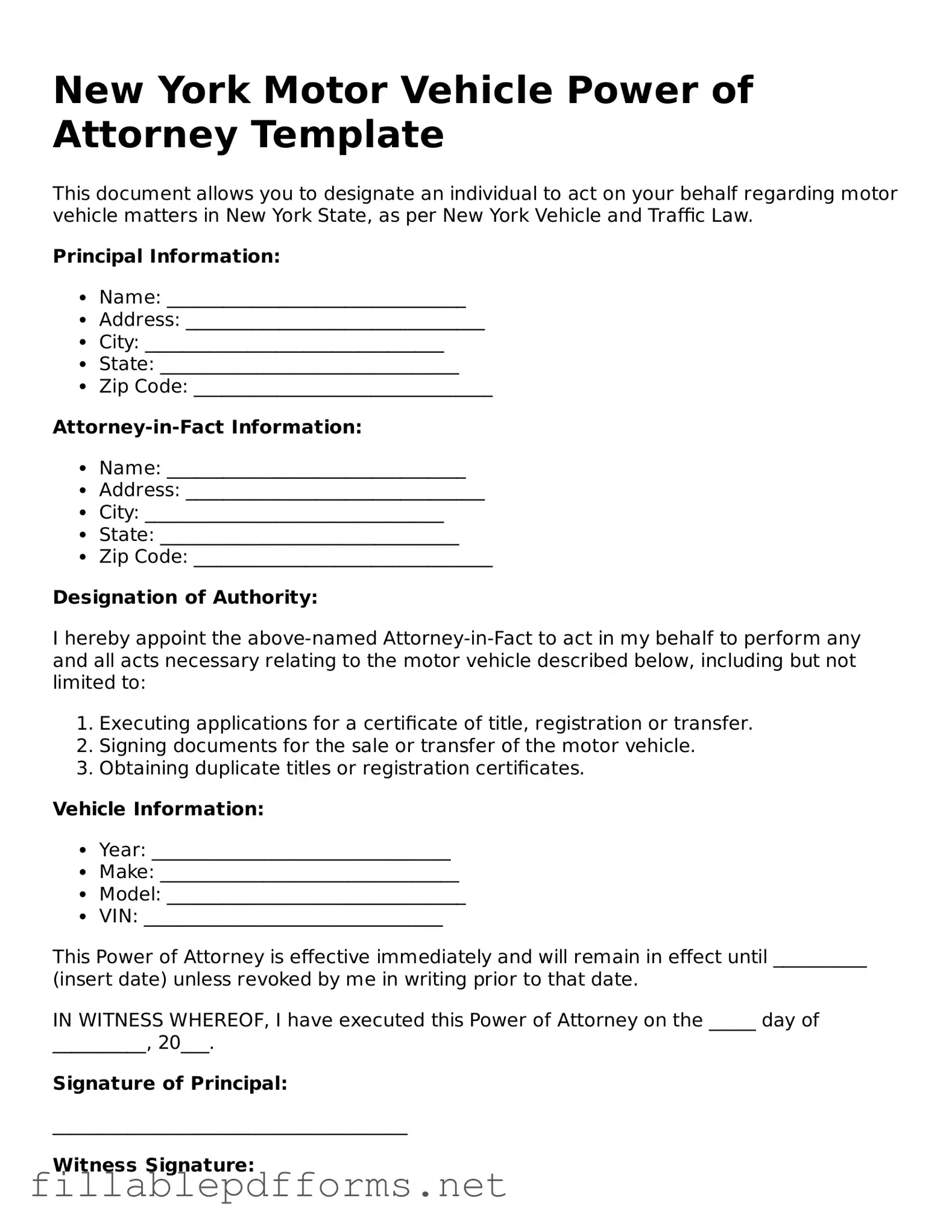Attorney-Verified Motor Vehicle Power of Attorney Form for New York State
The New York Motor Vehicle Power of Attorney form is a legal document that allows one person to authorize another to act on their behalf regarding motor vehicle transactions. This can include tasks like transferring ownership, registering a vehicle, or handling title issues. Understanding this form is essential for anyone needing to delegate these responsibilities effectively.
Launch Editor Here
